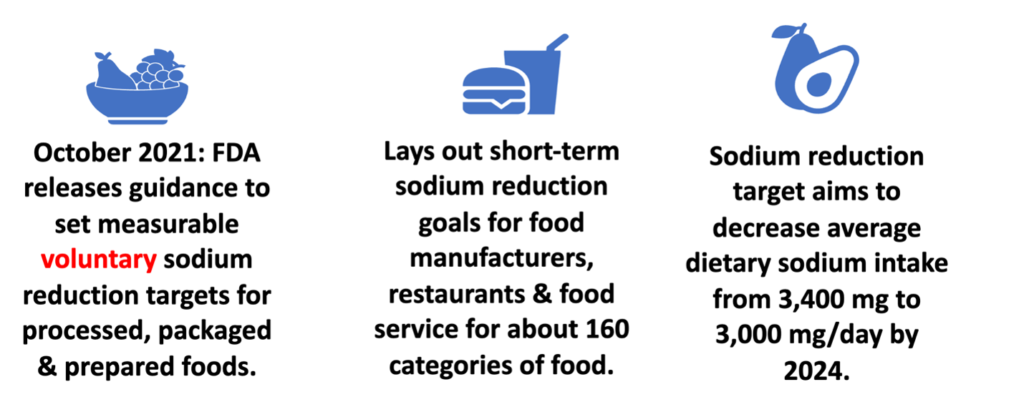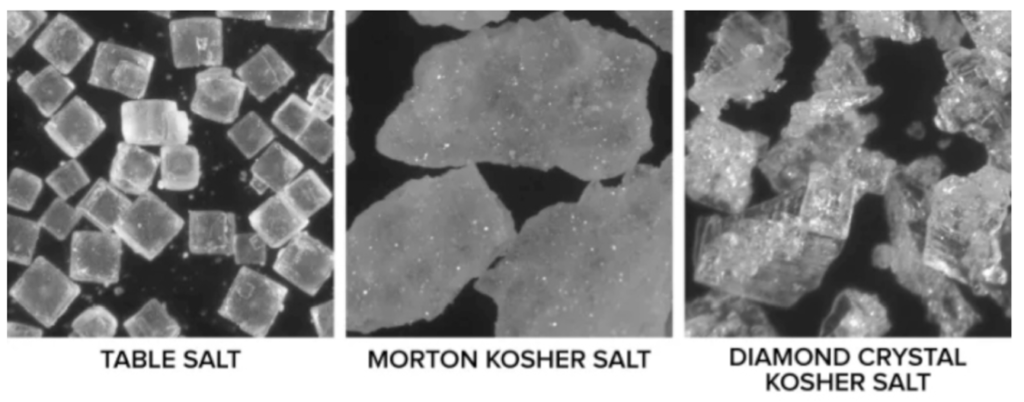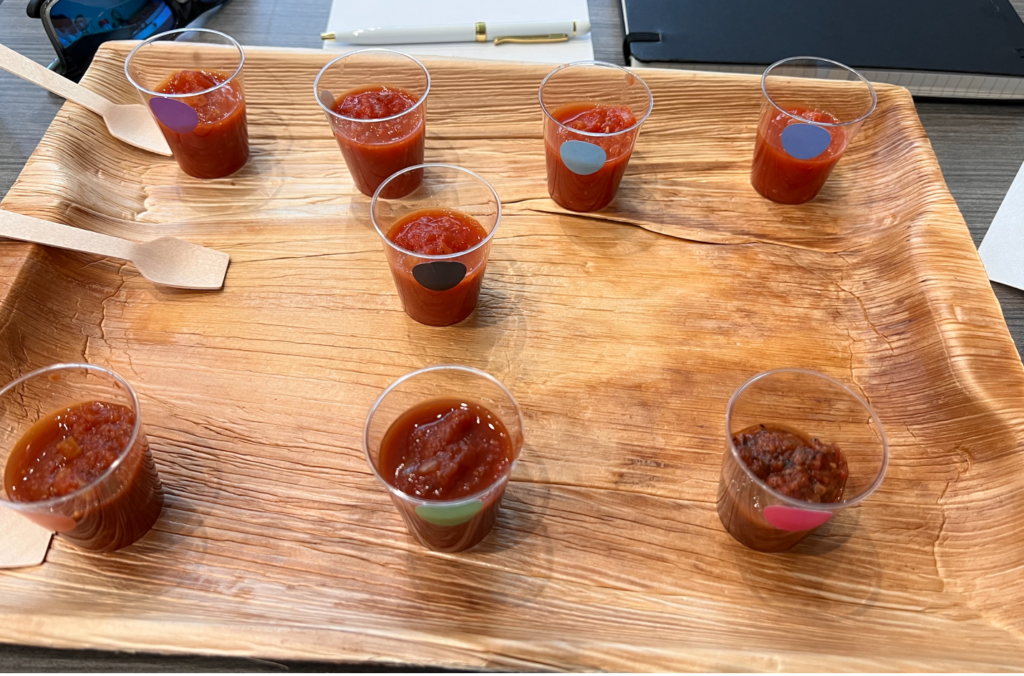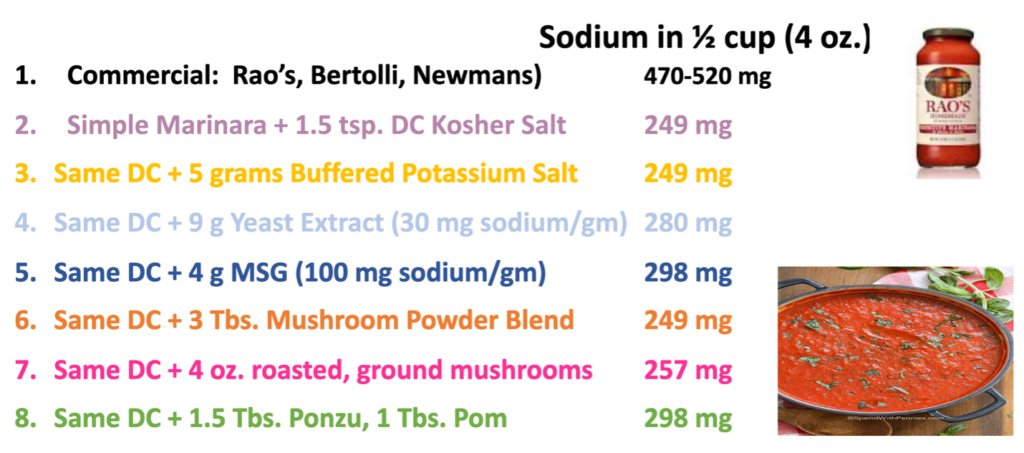September 15, 2022
Replacing One of Our Great Vices…Salt
Tony Treadway

For those who say the government shouldn’t intrude on your personal behavior, get ready for a new talking point. The Food and Drug Administration (FDA) will publish new guidelines for restaurants and their use of sodium in their menus. We’ll call it salt.
Nope. They aren’t taking away your salt completely. But effective in October 2022, the FDA is implementing guidelines for food processors and restaurants to reduce sodium in the foods they eat by about 12% by 2024. It’s a step in the gradual process to reduce salt intake further in years ahead by 33%.

The topic was the subject of one of the most interesting breakout sessions of The Flavor Experience in San Diego in August. Led by Pam Smith of Shaping America’s Plate with panelists, Scott Uehlein of Mod Pizza and Cliff Pleau, the session took a dive into alternate seasonings that gave the impression that salt brings to a meal.
Your body requires some level of salt to function but continued intake of sodium chloride, the chemical mix that we know as salt, can have numerous negative health effects. The naked truth is that we reach about 70% of our daily limit of recommended salt from processed foods and what we eat at restaurants.
Chefs have struggled with flavorful seasonings for centuries. Kikunae Ikeda was a Japanese chemist, who in 1908, uncovered the chemical basis of a taste he named umami. It is one of the five basic tastes which are sweet, bitter, sour, and salty. Monosodium glutamate (MSG). Urban legend and bad PR about MSG being unhealthy. The FDA later found it to be safe. Yet, some restaurant chains choose not to battle the stigma and use a combination of salt and other ingredients to mimic the umami flavor to generate an irresistible flavor.

My best example is Macaroni Grill’s Penne Rustica. The combination of roasted chicken, shrimp, prosciutto, rosemary cream, and parmesan was simply irresistible to me. I frequently drove more than 100 miles just because I craved it. Partial thanks go to a screaming 3,020 milligrams of salt!

As menu development chefs listened during the session, the experts noted that different brands of salt are important because of the way they are processed. For example, one teaspoon of fine-grain iodized table salt contains 2,400 milligrams of sodium (the negative component of salt). Yet, an equal amount of Diamond Crystal (DC) kosher salt contains less than half (1,120 milligrams) of sodium. The reason? Regular salt under a microscope appears as cubes stacked atop each other. The DC product appears like flakes that stack in a much smaller space enabling more of the flavor of salt in the same space. Menu developers noted that recipes for a chain’s custom menu item often specify Diamond Crystal kosher salt, but when franchisee kitchen staff substitute regular salt, the result is often foods that taste too salty.
What menu items inherently contain more salt? Breads, pizza, sandwiches, soups, chicken, cheese, eggs and omelets, burritos, and tacos. Why? Take a sandwich as an example. A sandwich layers the salt with the bread, the processed meat, and cheese as well as condiments into a giant combined salt bomb. The challenge for menu developers is to find alternatives to salt to maintain cravable flavor.

A simple tasting of marinara sauces served as a great example of alternative ingredients. Each participant in the breakout session was handed a tray with nine cups of marinara, each flavored with different ingredients.

Straight from the jar, Rao’s Marinara Sauce tipped the scale at between 470–520 milligrams of salt, but a sample using 1 ½ teaspoons of DC salt reduced the sodium to 249 milligrams. Other combinations with DC and mushroom powders, ground mushrooms or Ponzu (Japanese sauce), and Pomegranate Powder did the work of bringing flavor to the marinara.
Creating a unique flavor that other restaurants can’t match is the cornerstone of a successful menu. The latest challenge to restaurant chefs is finding ways to maintain the cravability with less and less salt to make it happen. Creative Energy maintains a cadre of chef consultants to create simple, yet uniquely delicious recipes for any menu. If you are in search of your next great menu success, let’s talk.
Get insights delivered straight to your inbox.